My son Parker’s grin lit up the narrow canyon. After just four casts, a 16-inch Yellowstone cutthroat wriggled impatiently at the end of his line. It was the first cutthroat trout he had ever caught. The fish was beautiful: gold and green under its large speckles. Two telltale red stripes brightened the underside of its lower jaw. Its cranberry gill plate made the perky piscine look embarrassed to be caught so effortlessly. Silly fish. It may have come quickly to Parker’s fly, but getting to the place where Parker could cast into the water was no easy matter. It required an overnight backpacking trip into Seven-Mile Hole — a five-mile trek that dropped almost 1,700 feet into the "Grand Canyon of the Yellowstone."
Though steep, the descent into Seven-Mile Hole was worth the thigh burn — as much for its eye-popping views as for the lure of the cutthroats below. The trail snaked alongside a precipice, then dropped to the Yellowstone River. Far below the clifftops, the river rushed away from Yellowstone’s massive Upper and Lower Falls, squeezed between walls of sulfur-stained sandstone and ancient volcanic spires. Boiling water trickled from small, steaming geothermal cracks along the route, which hikers sometimes shared with bears, eagles, and other wildlife looking for a fish dinner.
I paused frequently on our way to "the hole" to admire and contemplate the grandeur of the setting. My son was more interested in the trout.
Yellowstone cutthroat trout (Oncorhynchus clarkii bouvieri) are the only native trout in Yellowstone National Park. Once the primary fish species in the region (and an important food source for 20 bird and mammal species), Yellowstone cutthroats were in trouble by the 1980s, the victims of drought, over-fishing, loss of habitat, whirling disease, hybridization with rainbow trout, and competition with and predation by nonnative fish such as lake trout.
Today, Yellowstone National Park is an important sanctuary for Yellowstone cutthroats. Their recovery is due in large part to the research, habitat restoration, and protection the National Park Service (NPS) has given this sportfish prized by anglers in the northern Rocky Mountains. Of course, Parker didn’t know this. He had just come to catch one as part of a long-anticipated family adventure in America’s oldest national park.
Where "America’s Best Idea" Started
President Ulysses S. Grant signed the "Act of Dedication" that established Yellowstone National Park in 1872. Early conservationists and naturalists had pressured Congress to save the "land of fire and brimstone" from settlement by homesteaders and intrusion by the ever-expanding railroads. The Northern Pacific Railroad was also a huge supporter of the bill, expecting the new national park to draw tourists traveling across the continent on the proposed rail line from Minneapolis to Puget Sound. It did once the rail line was completed in 1883.
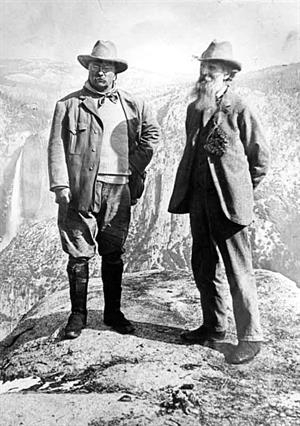 Although Congress appointed a super-intendent for Yellowstone, there was no budget to manage the park, no regulations in place governing use of park resources, and little oversight of the superintendent’s activities (or lack thereof). Yellowstone National Park was left to fend for itself. Forestry, farming, ranching, market hunting — even development of land within the park — encroached on the resources that made the park a national treasure.
Although Congress appointed a super-intendent for Yellowstone, there was no budget to manage the park, no regulations in place governing use of park resources, and little oversight of the superintendent’s activities (or lack thereof). Yellowstone National Park was left to fend for itself. Forestry, farming, ranching, market hunting — even development of land within the park — encroached on the resources that made the park a national treasure.
To prevent additional losses of the park’s natural resources, General Philip Sheridan — a Civil War hero and commander of the U.S. Army for much of the West — dispatched troops to take temporary control of Yellowstone in 1886. The park remained under military supervision for 30 years, as did several other national parks. However, the military had millions of acres to cover and no authority to enforce regulations or punish lawbreakers. As additional parks and monuments were added to the national park system, vandalism and loss of resources skyrocketed with increases in park visitations.
Businessman Stephen Mather, disgusted by the conditions at several national parks he visited in 1914, complained to Secretary of the Interior Franklin Lane, his former college classmate. Lane suggested if Mather was unhappy with the way the parks were being administered, he should run them himself. Lane probably did not expect Mather would do it. With a legal assistant named Horace Albright and a New York Times journalist to help with publicity, Mather set out to build support for America’s national parks and a government agency devoted exclusively to overseeing them.
In 1916, President Woodrow Wilson signed the Organic Act, which created the National Park Service within the U.S. Department of the Interior. Mather was named the first NPS director and Albright his second in command. The stated mission of the National Park Service was "to conserve the scenery and the natural and historic objects and the wildlife therein and to provide for the enjoyment of the same in such manner and by such means as will leave them unimpaired for the enjoyment of future generations." That mission remains largely intact today.
Mather also created a professional group of park rangers to care for the parks and interact with visitors. The uniform park rangers were expected to wear included a flat-brimmed hat — the signature hat that helps us identify park rangers today!
View historical photos of Yellowstone National Park >>
Find Your Park
This year marks the 100th anniversary of the National Park Service. Today, the agency manages 411 units within the national park system, not only iconic landscapes but also cultural and historic landmarks in all 50 states, the District of Columbia, and several U.S. territories.
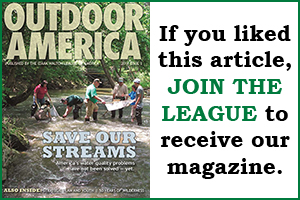 Some of these places, especially in the West, offer what many people may envision when they think of a national park: scenic vistas, fantastic wildlife viewing, and numerous outdoor activities, including fishing, hiking, and whitewater rafting. The natural beauty of Yosemite and the Grand Canyon, for example, are iconic parts of our national park system. However, they are only one piece of the system. The others might surprise you. For example, Theodore Roosevelt’s birthplace is part of the national park system, as are the childhood homes of George Washington and Abraham Lincoln. In fact, there is at least one site within the park system dedicated to each former U.S. president.
Some of these places, especially in the West, offer what many people may envision when they think of a national park: scenic vistas, fantastic wildlife viewing, and numerous outdoor activities, including fishing, hiking, and whitewater rafting. The natural beauty of Yosemite and the Grand Canyon, for example, are iconic parts of our national park system. However, they are only one piece of the system. The others might surprise you. For example, Theodore Roosevelt’s birthplace is part of the national park system, as are the childhood homes of George Washington and Abraham Lincoln. In fact, there is at least one site within the park system dedicated to each former U.S. president.
The National Mall in Washington, DC, home to iconic landmarks including the Washington Monument and Vietnam Veterans Memorial; the Mississippi National River and Recreation Area, which provides outdoor recreation opportunities across urban areas of Minnesota; and the Wright Brothers National Memorial in North Carolina, where Wilbur and Orville Wright launched the first successful airplane flights, are all part of our national park system. The National Park Service oversees battlefields, seashores, lakeshores, and much more. The agency also provides financial and technical assistance to help local communities protect resources for public enjoyment.
There are 28 different designations in the national park system (see sidebar) — literally something for everyone no matter your background, interests, or location. Find the national parks near you at FindYourPark.com, a Web site developed to help recruit the next generation of national park visitors.
View historical photos of our National Parks >>
Recruiting New Visitors
Jonathan Jarvis, director of the National Park Service, emphasized the need to bring more people into our national parks — especially young people and minorities — during an address to the Outdoor Writers Association of America.
"Regardless of your background, everyone who stands on the rim of the Grand Canyon appreciates the scenery and feels a rush of pride," said Jarvis. "Our national parks are a collection of who we are as a people. They preserve and define the values that unite us and serve as a beacon of hope to the rest of the world. One of the goals of the centennial is to create the next generation of park advocates. What people care about, they’ll take responsibility for. Baby boomers were taken to the parks by their parents. We need millennials to take their kids, too."
Sound familiar? Virtually every government agency that manages public lands for recreation, conservation, and wildlife — plus national conservation organizations such as the Izaak Walton League — has placed a top priority on getting kids outdoors.
"There’s a lot of apathy [about our national parks]," said Jarvis. "If no one cares, it will be very difficult to counteract climate change, pollution, non-native species and to preserve our natural places. But it’s more than that. The National Park Service has the responsibility to reacquaint people with the values that bind us . . . . We’ve set aside places that represent our best natural landscapes, our heritage, and our highest national values."
Last year, the National Park Service announced an Urban Agenda to connect with Americans where they live. You may be surprised at how urban our national park system is.
- Forty of the country’s 50 most populated urban areas have national parks located within them.
- One-third of all national parks are located in urban areas, including the National Mall in Washington, DC; the Jefferson National Expansion Memorial in St. Louis, Missouri (which includes the famed St. Louis Arch); and the Golden Gate National Recreation Area in San Francisco, California.
- Thirty-six percent of all national park visits occur at urban sites.
- The National Park Service has 30 programs that serve urban communities, including funds and technical assistance for recreational facilities, environmental restoration, maintenance of historic architecture, trail building, and youth engagement.
Urban national parks also generate an estimated $1.8 billion in labor income and $4.7 billion in economic output. With 80 percent of Americans living in a city today (projected to rise to 85 percent by 2030), urban parks are an important way to reach new audiences, including youth.
Every Kid in a Park
The National Park Service is working to attract a younger, more diverse population of park visitors, not all of whom want to trek into the wilderness, take a fish off a hook, or watch a bison roll in the mud — at least, not on their first visit.
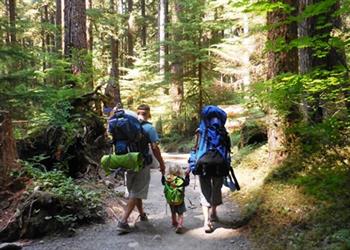 Last September, NPS launched another cornerstone of its centennial: the Every Kid in a Park program. This nationwide initiative allows every fourth grader to download a pass that provides free entrance to all national parks as well as national wildlife refuges and recreation areas on U.S. Forest Service, Bureau of Land Management (BLM), and Bureau of Reclamation lands and waters that have a user fee. Although children under age 16 are normally admitted into national parks for free, the Every Kid in a Park pass also provides free entry for up to three adults, including family, friends, caregivers, teachers, and anyone else who might take a child to a national park.
Last September, NPS launched another cornerstone of its centennial: the Every Kid in a Park program. This nationwide initiative allows every fourth grader to download a pass that provides free entrance to all national parks as well as national wildlife refuges and recreation areas on U.S. Forest Service, Bureau of Land Management (BLM), and Bureau of Reclamation lands and waters that have a user fee. Although children under age 16 are normally admitted into national parks for free, the Every Kid in a Park pass also provides free entry for up to three adults, including family, friends, caregivers, teachers, and anyone else who might take a child to a national park.
The Izaak Walton League was part of the Every Kid in a Park kickoff last September at Rock Creek Park in Washington, DC. More than 100 local fourth graders received their park passes and spent a morning exploring this haven for deer, migratory birds, and other wildlife within our nation’s highly urbanized capital. During the event, League staff provided an educational station on water quality and watersheds, teaching students how to keep our waters clean.
To help students get to a national park, the National Park Foundation developed a transportation grant program. Grants are awarded to federal agencies, which then provide funds to cover the transportation costs of bringing fourth-grade classes to national park facilities. "For cash-strapped schools, the grant program will help provide money so they can use our parks as an outdoor learning laboratory," says Alexa Viets, Centennial Coordinator for the National Park Service. "The program crosses all agencies within the Department of the Interior. Several states are also getting on board, offering free admission to state parks."
Why focus on fourth graders? "They’re old enough to understand conservation at a basic level, and they’re open and excited about learning," explains Viets. Although it was launched as part of the National Park Service’s centennial celebration, Every Kid in a Park is meant to continue into the future. After a decade, an entire generation of kids will hopefully have spent time in our national parks and formed an affinity for them.
Centennial Challenges
The National Park Service’s initiatives to increase visitation make sense in terms of building an ongoing stewardship base, but if you’ve been to a national park recently, you may question the need to get more people into parks. Vehicle congestion, crowds at viewpoints, and long lines at park facilities (especially during the summer) have become the norm at many sites. Yellowstone National Park saw a 17-percent increase in visitors in 2015, surpassing 4 million people. Great Smokey Mountains National Park in Tennessee, the most popular site in the national park system, also broke its visitation record, with more than 10.7 million visitors last year.
Overall, a record 307 million people visited national parks in 2015 (up from 292 million in 2014).
Unfortunately, the increased revenue from more visitors (and not every park charges an entrance fee) won’t come close to covering the costs of improvements needed to handle the park system’s $12 billion maintenance backlog. The National Park Service is using the centennial as a rallying point for tackling this challenge.
Funds for Local Projects
Generating funds for projects at the local level is another goal of the centennial. Last year, the agency received $26 million for more than 100 local projects in 31 states and the District of Columbia: $10 million in federal funds plus an additional $16 million in matching funds from more than 90 partner organizations. The money is paying for such projects as building trails for hiking and mountain biking in metro-Cleveland; restoring two historic barns in Grand Teton National Park; and improvements to the iconic arch and road between Gardiner, Montana, and Yellowstone National Park.
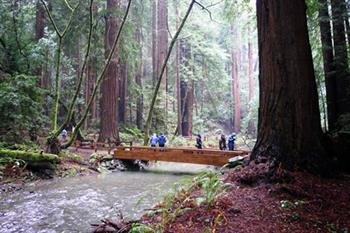 Other grants are available through the Land and Water Conservation Fund (LWCF). The National Park Service administers a program that provides matching grants to state and local agencies to acquire and develop public outdoor recreation areas and facilities. The money for LWCF comes from offshore oil and gas royalties and is available to all 50 states. Last August, $42 million was distributed through the State and Local Assistance Program from LWCF.
Other grants are available through the Land and Water Conservation Fund (LWCF). The National Park Service administers a program that provides matching grants to state and local agencies to acquire and develop public outdoor recreation areas and facilities. The money for LWCF comes from offshore oil and gas royalties and is available to all 50 states. Last August, $42 million was distributed through the State and Local Assistance Program from LWCF.
"Ninety-eight percent of the counties in the United States have received funds through the Land and Water Conservation Fund," says Alexa Viets. "It starts locally. [Any community] can apply for a grant for an outdoor recreational or conservation use, but it must be for the public in perpetuity."
Through the National Register of Historic Places and the National Historic Landmarks Program, the National Park Service also provides technical advice to owners on the care of historic buildings and how to take advantage of tax credits related to such conservation. Private sources have invested more than $60 billion to revitalize downtown districts and neighborhoods of historic note throughout the United States. This is another successful program to which NPS wants to draw attention during its centennial celebration.
Free Admission Days
While the Every Kid in a Park program intends to recruit a large percentage of one generation over time, another centennial program means to attract people of every generation now.
The National Park Service is waiving entrance fees to all national parks on 16 days during 2016. The remaining dates this year are:
- August 25-28: National Park Service’s 100th birthday celebration
- September 24: National Public Lands Day
- November 11: Veterans Day
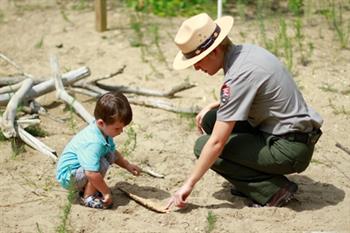 But you don’t need to wait for one of the free admission days to visit a national park. Many are fee-free year round. One my most memorable mother-son outings was Parker’s first hike, at age 2, on a mile-long section of the Appalachian National Scenic Trail. The 2,160-mile trail, built by private citizens, non-profit hiking associations, and the Civilian Conservation Corp — and now managed by the Park Service in cooperation with the U.S. Forest Service, state agencies, conservation groups, and thousands of local citizens — is the longest and narrowest national park in the United States. Much of this famous footpath, which follows the Appalachian Mountains from Georgia to Maine, requires only some sturdy footwear to experience historic fire towers, expansive views, and woodland walks. The hiking is free.
But you don’t need to wait for one of the free admission days to visit a national park. Many are fee-free year round. One my most memorable mother-son outings was Parker’s first hike, at age 2, on a mile-long section of the Appalachian National Scenic Trail. The 2,160-mile trail, built by private citizens, non-profit hiking associations, and the Civilian Conservation Corp — and now managed by the Park Service in cooperation with the U.S. Forest Service, state agencies, conservation groups, and thousands of local citizens — is the longest and narrowest national park in the United States. Much of this famous footpath, which follows the Appalachian Mountains from Georgia to Maine, requires only some sturdy footwear to experience historic fire towers, expansive views, and woodland walks. The hiking is free.
Our particular destination on that mild summer day was a lean-to at a place in New Hampshire called Velvet Rocks, so named for the moss-covered boulders that surround the spot. We never made it there that day. Parker was too busy catching salamanders, jumping in mud puddles, and testing his balance on fallen logs, but our outing laid the foundation for his love of the outdoors.
Since then, we’ve spent many memorable days on the Appalachian Trail, climbing some of its loftiest peaks. That’s part of what’s beautiful about our national parks: as my son has grown up, he continues to find things that intrigue him. This year, we’re planning to celebrate the 100th anniversary of the National Park Service with a trip to Yosemite, or maybe Cape Cod National Seashore or the Everglades or Fort Sumter . . . . There are so many possibilities, and everyone has an invitation to the party. All 411 units of the National Park Service are hosting events in honor of the occasion.
Not only does the centennial provide an opportunity to celebrate 100 years of conserving important landscapes and landmarks across America, it is a chance to plan for the future of our national park system — and how Americans connect with it.
"Through the centennial, we want to amplify the work of the National Park Service as it relates to preservation, education, and conservation," says Viets. "National parks are the stories of America. We hope the next generation knows the places, learns the stories, sees the value, and loves the national parks like previous generations."
It’s a celebration you won’t want to miss.
Download this article for more information on our National Parks.